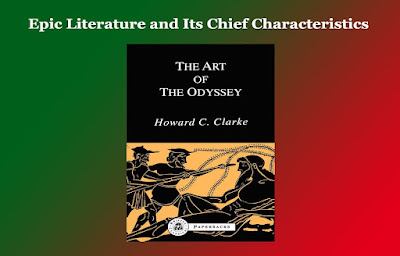Tips For Poetry Criticism
Tips For Poetry Criticism
Tips For Poetry Criticism
Tips For Poetry Criticism
Introduction:
Poetry criticism is the process of analyzing, evaluating, and interpreting poems to gain a deeper understanding of their artistic qualities, meaning, and impact. It involves a thoughtful examination of various elements within a poem, such as language, imagery, structure, and themes, with the aim of providing insights into the poet's intentions and the overall artistic merit of the work.
The following are the key aspects of poetry criticism.
Analysis of Poetic Devices:
Poetry is characterized by its use of specific literary devices such as rhyme, meter, alliteration, metaphor, and symbolism. Critics examine how these devices are employed to enhance the aesthetic and emotional aspects of the poem.
Interpretation of Themes and Symbols:
Critics explore the underlying themes and symbols in a poem, delving into the deeper meanings and messages conveyed by the poet. This involves identifying recurring motifs and understanding their significance within the broader context of the poem.
Consideration of Structure and Form:
The structure and form of a poem contribute significantly to its impact. Critics analyze the arrangement of stanzas, line breaks, rhyme schemes, and other formal elements to assess how they shape the reader's experience and contribute to the poem's overall effectiveness.
Evaluation of Language and Imagery:
The language chosen by the poet and the use of vivid imagery play crucial roles in poetry. Critics assess the effectiveness of the poet's language choices, examining how they create sensory experiences, evoke emotions, and contribute to the overall aesthetic quality of the poem.
Exploration of Cultural and Historical Context:
Poetry is often influenced by the cultural, historical, and social context in which it is written. Critics consider the time and place of the poem's creation, exploring how external factors may have influenced the poet's perspective and choices.
Examination of Poetic Style:
Each poet has a distinctive style characterized by recurring themes, rhetorical devices, and unique artistic expressions. Poetry criticism involves analyzing and appreciating the individual style of a poet, recognizing the contributions that make their work stand out.
Comparative Analysis:
Critics may engage in comparative analysis by considering a poem in relation to other works by the same poet or within the broader literary tradition. This approach helps situate the poem within a larger context and highlights its unique contributions or influences.
Reader Response:
Poetry criticism acknowledges the subjective nature of interpretation. Critics may explore how different readers might respond to a poem, recognizing that diverse perspectives contribute to the richness of meaning inherent in poetry.
Recognition of Intertextuality:
Intertextuality refers to the interplay of a poem with other texts, including literary works, cultural references, or historical events. Critics explore how a poem may reference or interact with other texts, enriching its layers of meaning.
Balancing Objectivity and Subjectivity:
Poetry criticism aims to maintain a balance between objective analysis and subjective interpretation. While considering the technical aspects of a poem, critics also acknowledge the personal and emotional responses that poetry elicits.
Conclusion:
In
summary, poetry criticism is a multidimensional process that involves a
thorough examination of a poem's elements, contextual factors, and the
subjective experiences it generates. It contributes to the broader discourse on
literature by offering insights into the intricate artistry of poetry and
fostering a deeper appreciation for the diverse ways in which language can be
used to convey meaning and emotion. 0 0 0.
Tips
For Poetry Criticism
Tips
For Poetry Criticism
Some Critical Essays on English Poetry
The Theme of Love in Edmund Spenser's Sonnet Sequence 'Amoretti'
The Use of Myth and Symbolism in T.S. Eliot's 'The Waste Land'
D.G Rossetti's 'The Blessed Damozel' as a Pre-Raphaelite Poetry










Comments
Post a Comment
Comment should be honest and suggestive